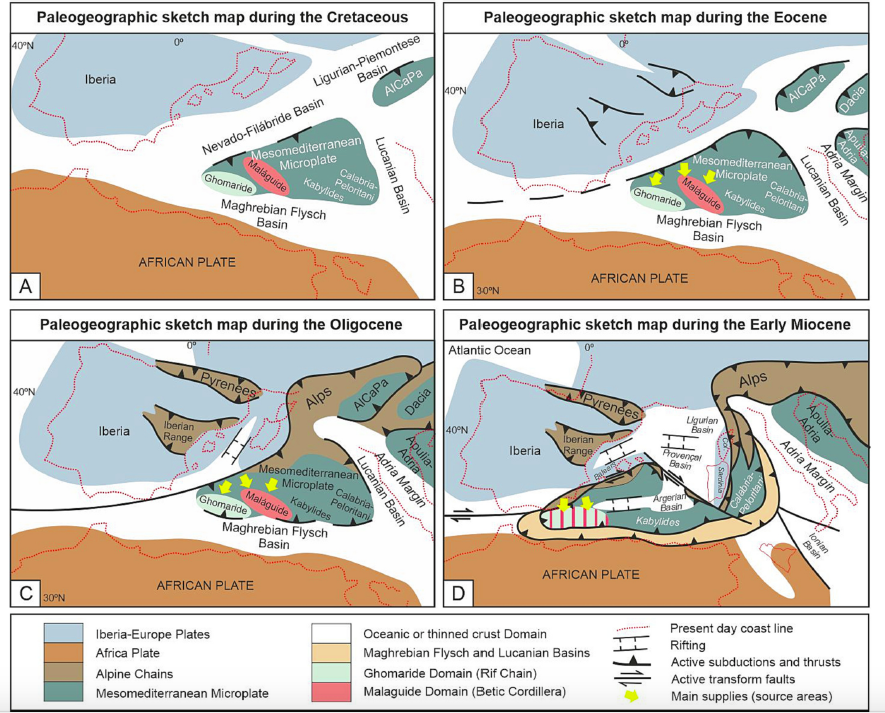Home » Posts tagged 'Mudrock mineralogy'
Tag Archives: Mudrock mineralogy
Cenozoic detrital suites from the Internal Betic-Rif Cordilleras (S Spain and N Morocco): implications for paleogeography and paleotectonics
A synthesis of Cenozoic detrital suites from the Internal Betic-Rif Cordilleras is discussed in relations with major paleotectonic phases during growth of orogenic belts. The discussion has been focused on the Malaguide and Ghomaride complexes that have a Cenozoic sedimentary detritic cover. The heterogeneous petrographic composition of coarse detrital rocks, and the mineralogy and geochemistry of mudrocks indicate a multiple source area consisting in metamorphic, and recycled siliciclastic and carbonate source rocks, with a minor supply of mafic rocks during the early Miocene. The siliciclastic coarse detrital suites plot mainly in a wide area at the Qm-Lt side in a Qm-F-Lt diagram reflecting their transition between a craton, quartzose recycled, quartzose transitional orogenic, and finally lithic transitional orogenic provenance type. The Paleocene-Eocene successions seem to be affected by higher weathering effects than the Oligo-Miocene ones. Significant recycling and reworking processes should take place during the Paleocene-Eocene and the Oligo-Miocene before the final deposition. The source areas were characterized by non-steady-state weathering conditions reflecting a progressive cooling contemporaneous to the typical evolution of source areas where active tectonism allows erosion within weathering profiles developed on source rocks. A sharp increase of siliciclastic content together with the changes in sorting-recycling-weathering suggests abrupt changes in the source area starting from Oligocene. This fact allows subdividing the succession into the lower (Paleocene-Eocene) and the upper (Oligocene-Early Miocene) cycles. Lower cycle was contemporaneous to the Eo-Alpine tectonic phase, which was reflected in the Malaguide and Ghomaride domains by basement folding and deep tectonics with fault-propagation folds, accomplished by minor rising or reliefs and deepening of subsidence areas. Contrarily, the upper cycle took place during the Neo-Alpine phase, when in the Malaguide and Ghomaride domains, thrustings should become superficial contemporaneous to subduction and stacking of tectonic units.

This led to a strong increasing of rising areas reflected in the sedimentation by the occurrence of coarse terrigenous deposits in wedge-top basins. The early Miocene also shows the influence of volcanism in the Mediterranean region, and/or the erosion of magmatic-metamorphic rocks derived from deep tectonic levels affected in the Eo-Alpine phase or belonging to the Hercynian bedrock. This evolution fits well with recent paleogeographic-geodynamic models for the western-central Mediterranean.
Cite as: Martín-Martín, M., Perri, F., Critelli, S., 2023. Cenozoic detrital suites from the Internal Betic-Rif Cordilleras (S Spain and N Morocco): implications for paleogeography and paleotectonics. Earth-Science Rev. 243, 104498. https://doi.org/10.1016/j.earscirev.2023.104498
Recent Comments